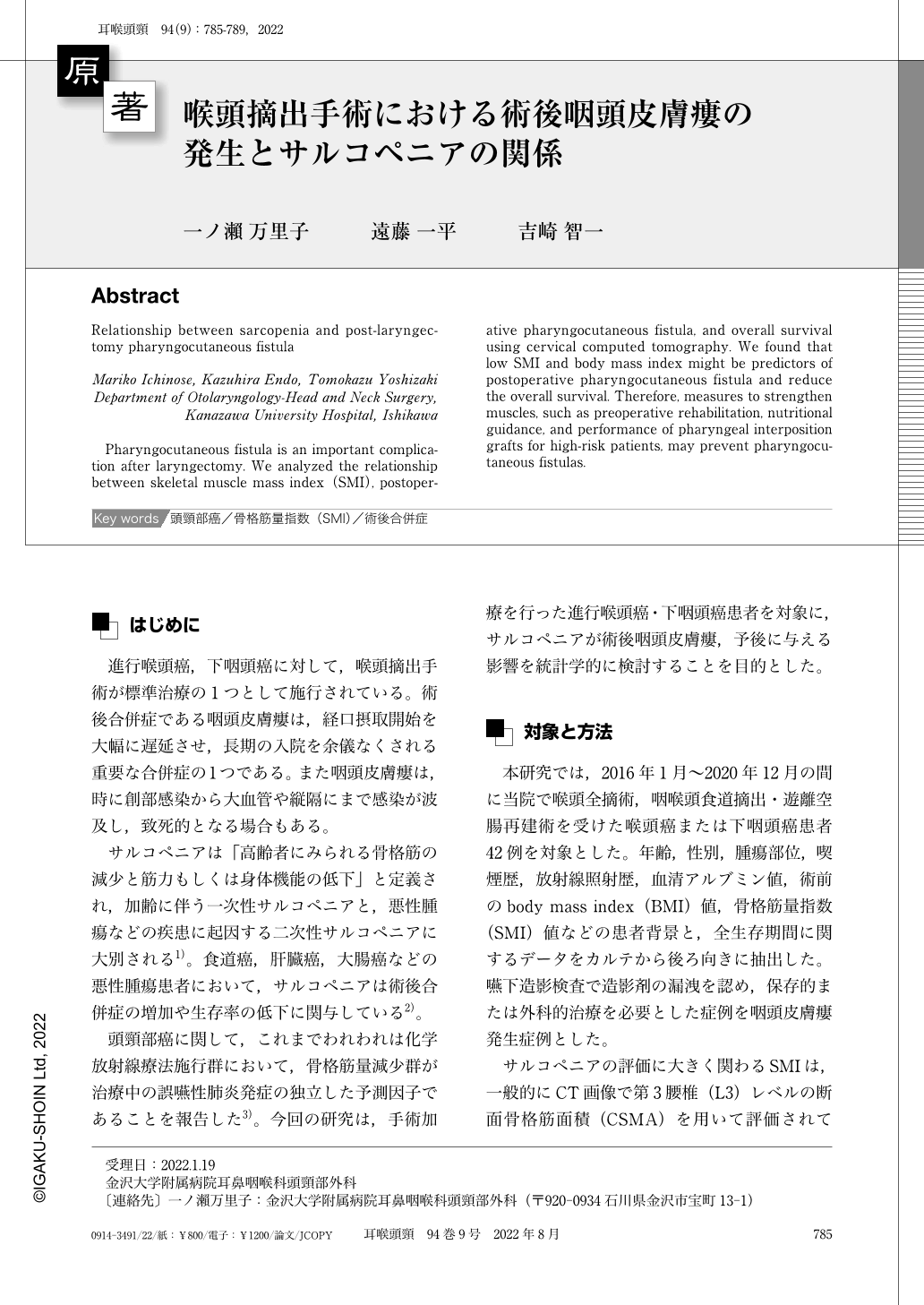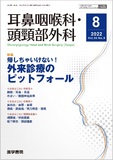Japanese
English
- 有料閲覧
- Abstract 文献概要
- 1ページ目 Look Inside
- 参考文献 Reference
はじめに
進行喉頭癌,下咽頭癌に対して,喉頭摘出手術が標準治療の1つとして施行されている。術後合併症である咽頭皮膚瘻は,経口摂取開始を大幅に遅延させ,長期の入院を余儀なくされる重要な合併症の1つである。また咽頭皮膚瘻は,時に創部感染から大血管や縦隔にまで感染が波及し,致死的となる場合もある。
サルコペニアは「高齢者にみられる骨格筋の減少と筋力もしくは身体機能の低下」と定義され,加齢に伴う一次性サルコペニアと,悪性腫瘍などの疾患に起因する二次性サルコペニアに大別される1)。食道癌,肝臓癌,大腸癌などの悪性腫瘍患者において,サルコペニアは術後合併症の増加や生存率の低下に関与している2)。
頭頸部癌に関して,これまでわれわれは化学放射線療法施行群において,骨格筋量減少群が治療中の誤嚥性肺炎発症の独立した予測因子であることを報告した3)。今回の研究は,手術加療を行った進行喉頭癌・下咽頭癌患者を対象に,サルコペニアが術後咽頭皮膚瘻,予後に与える影響を統計学的に検討することを目的とした。
Pharyngocutaneous fistula is an important complication after laryngectomy. We analyzed the relationship between skeletal muscle mass index(SMI), postoperative pharyngocutaneous fistula, and overall survival using cervical computed tomography. We found that low SMI and body mass index might be predictors of postoperative pharyngocutaneous fistula and reduce the overall survival. Therefore, measures to strengthen muscles, such as preoperative rehabilitation, nutritional guidance, and performance of pharyngeal interposition grafts for high-risk patients, may prevent pharyngocutaneous fistulas.

Copyright © 2022, Igaku-Shoin Ltd. All rights reserved.


